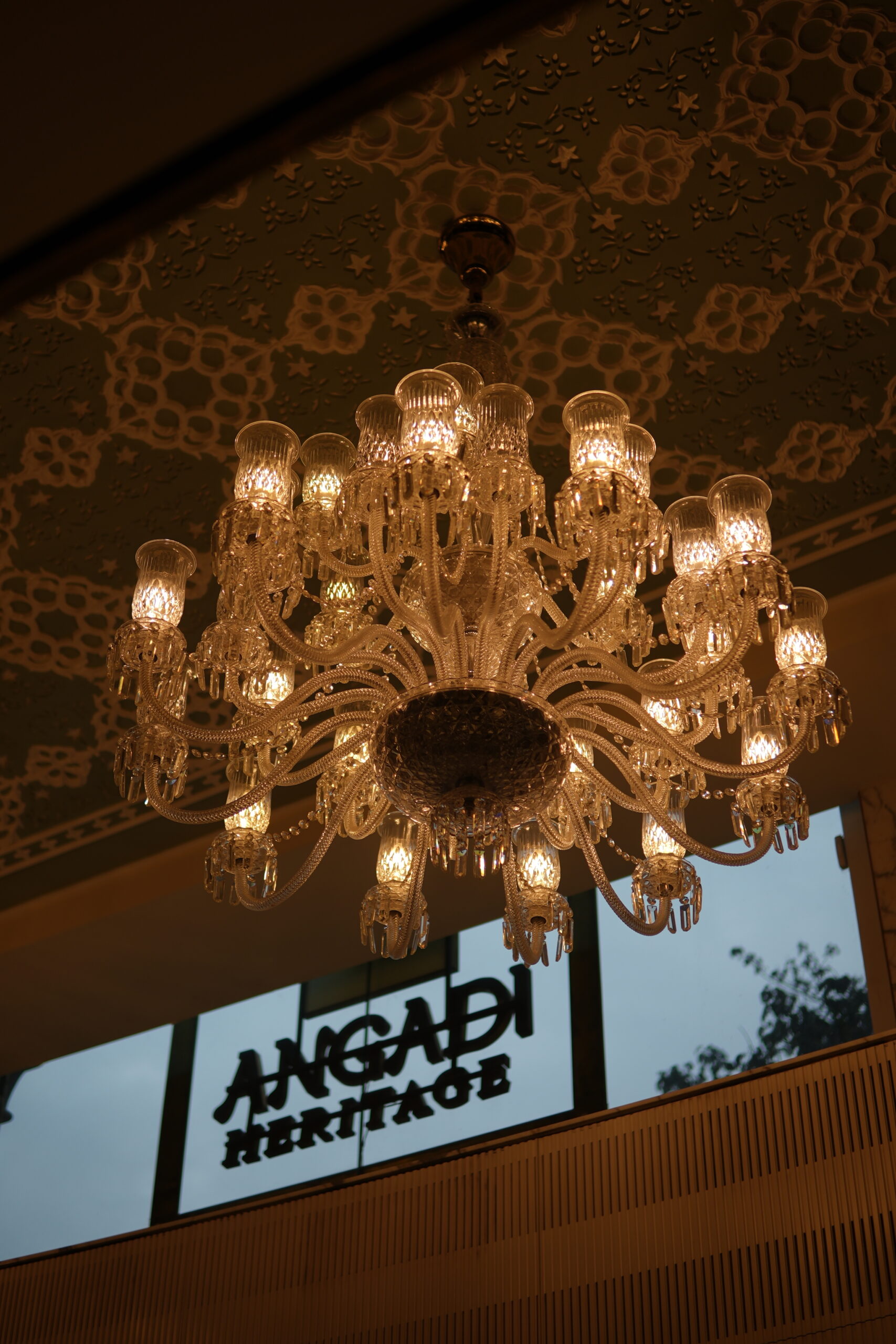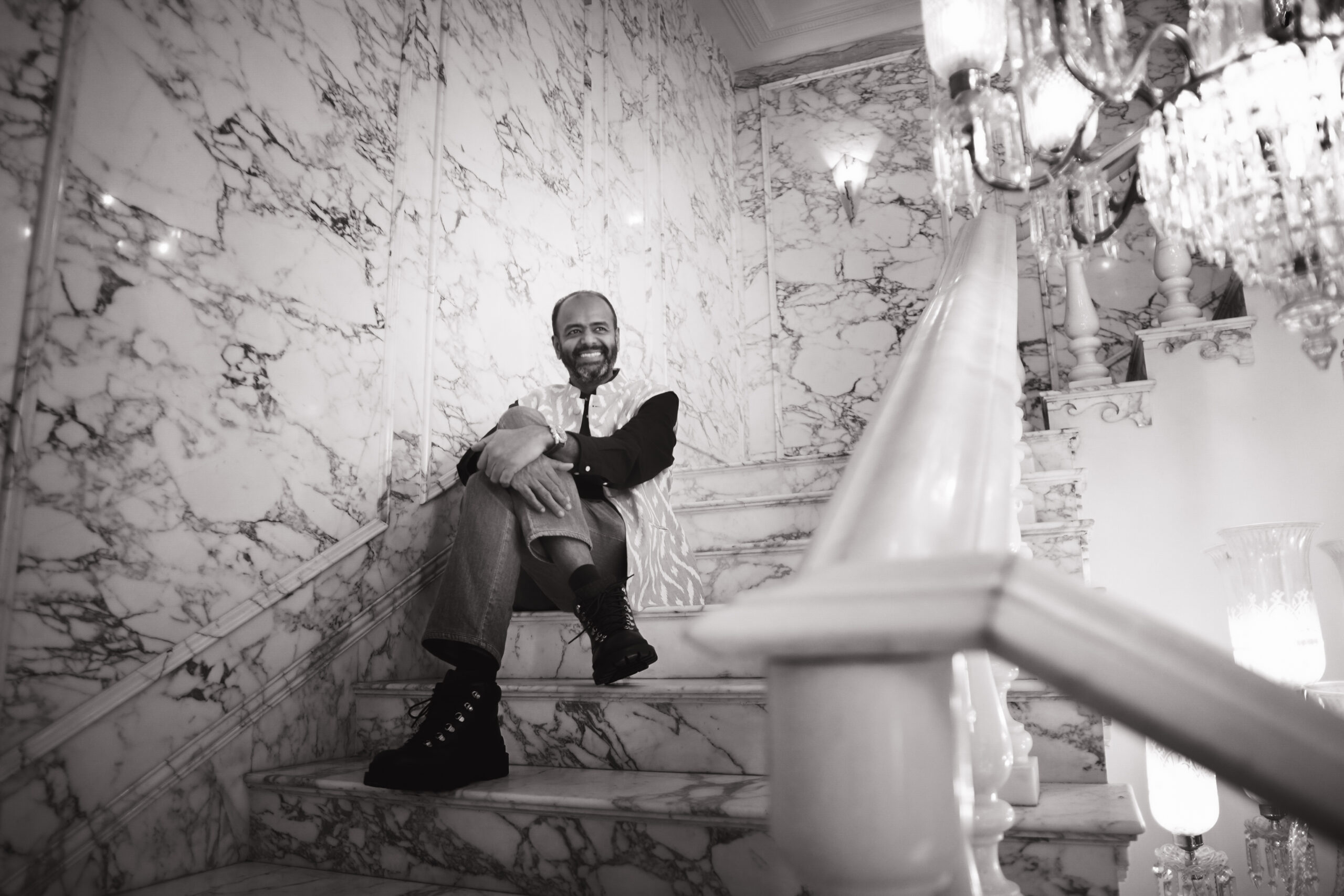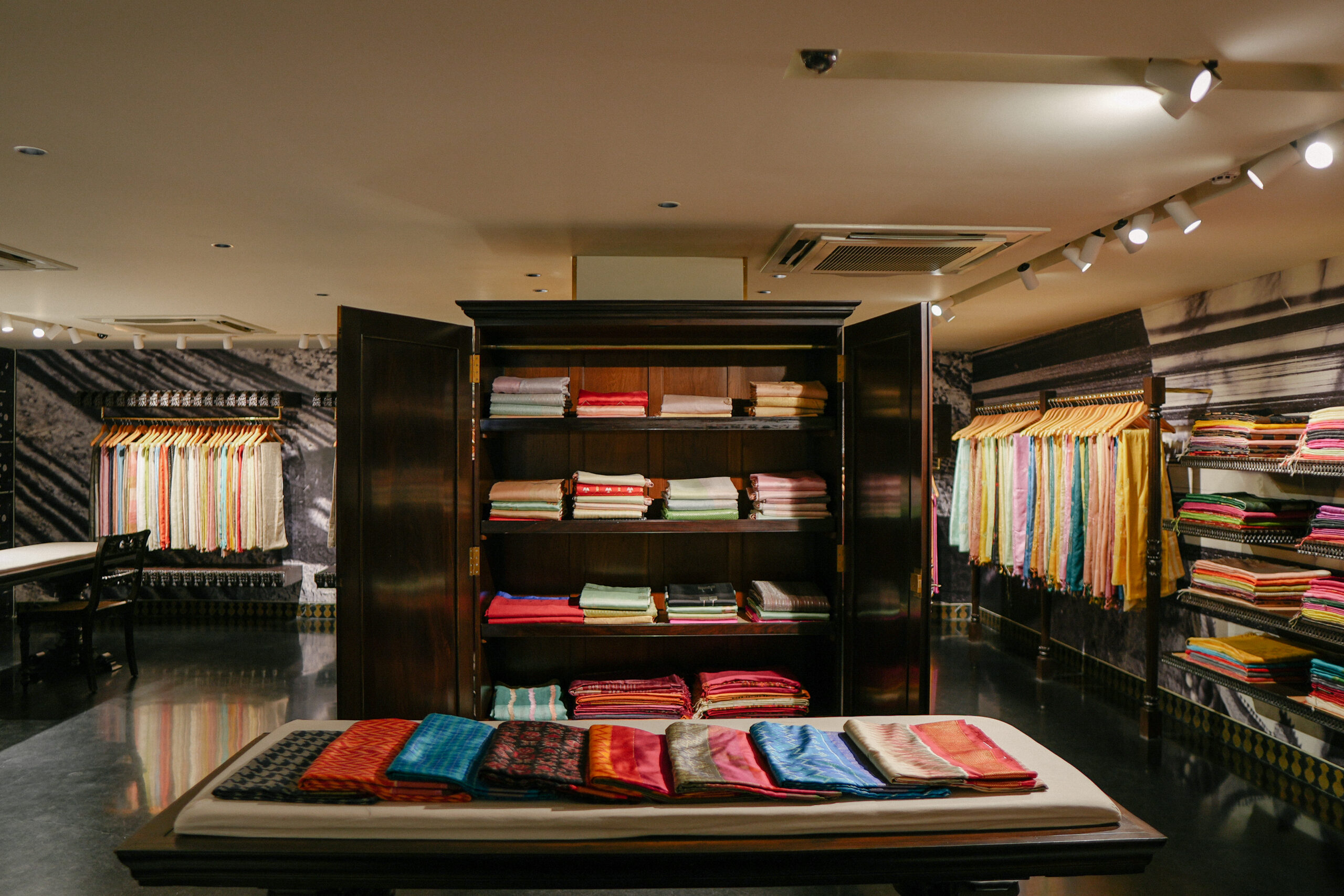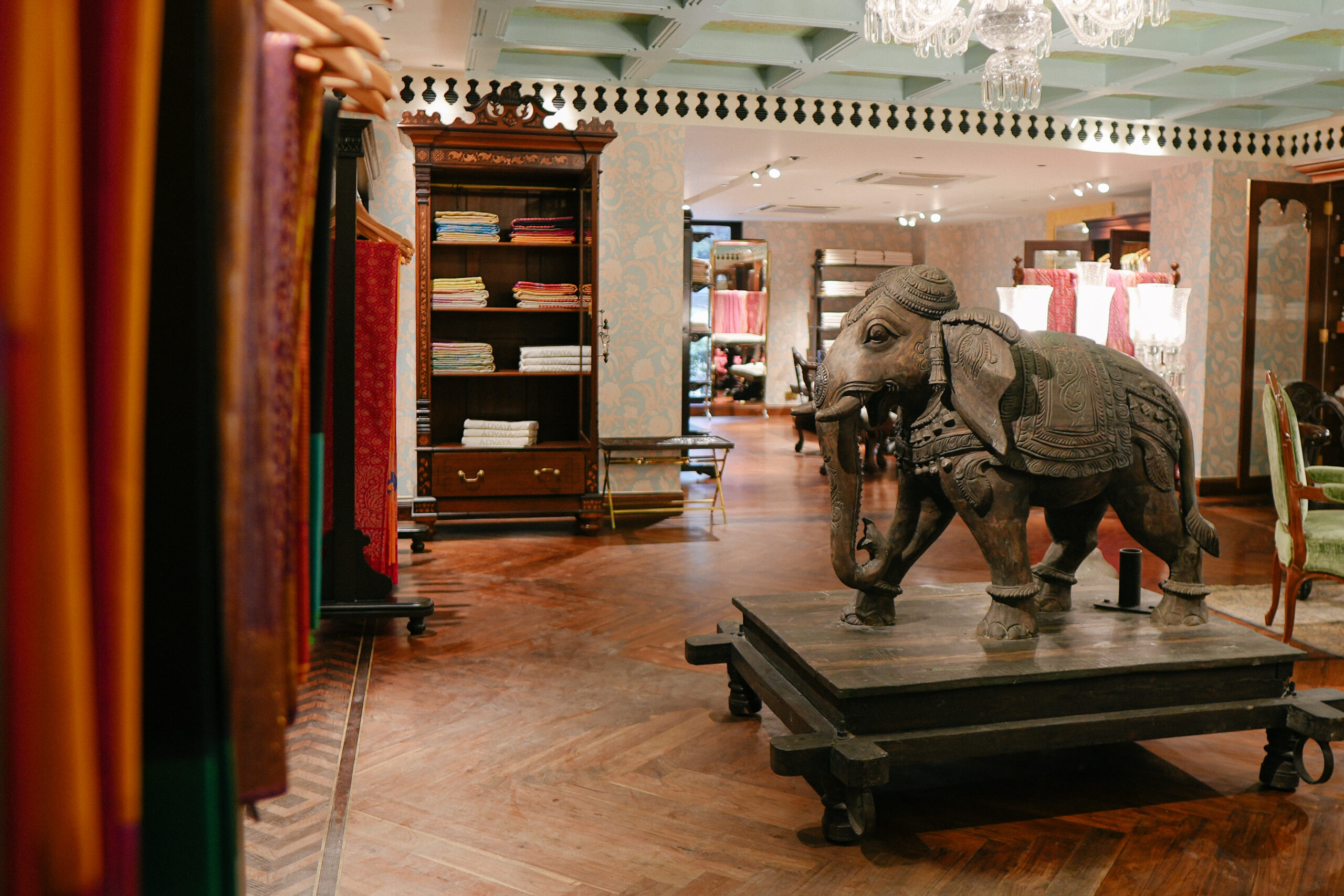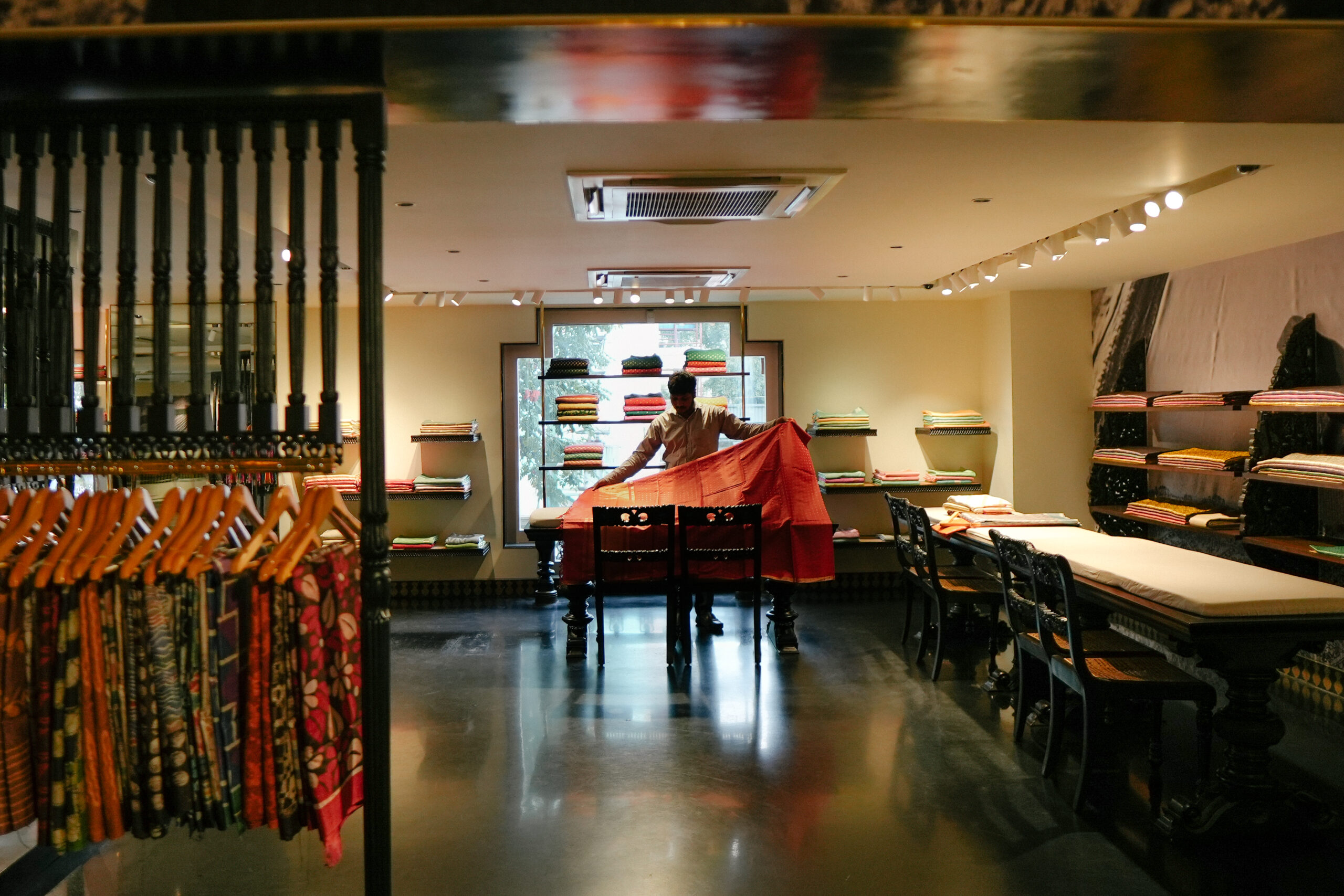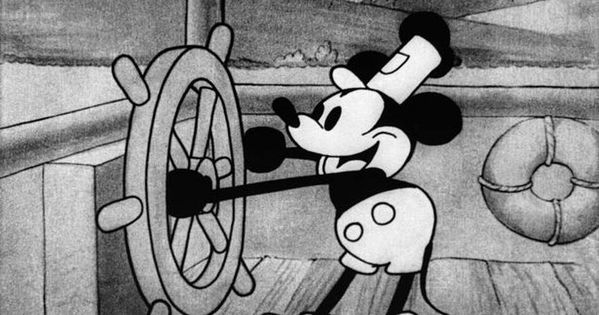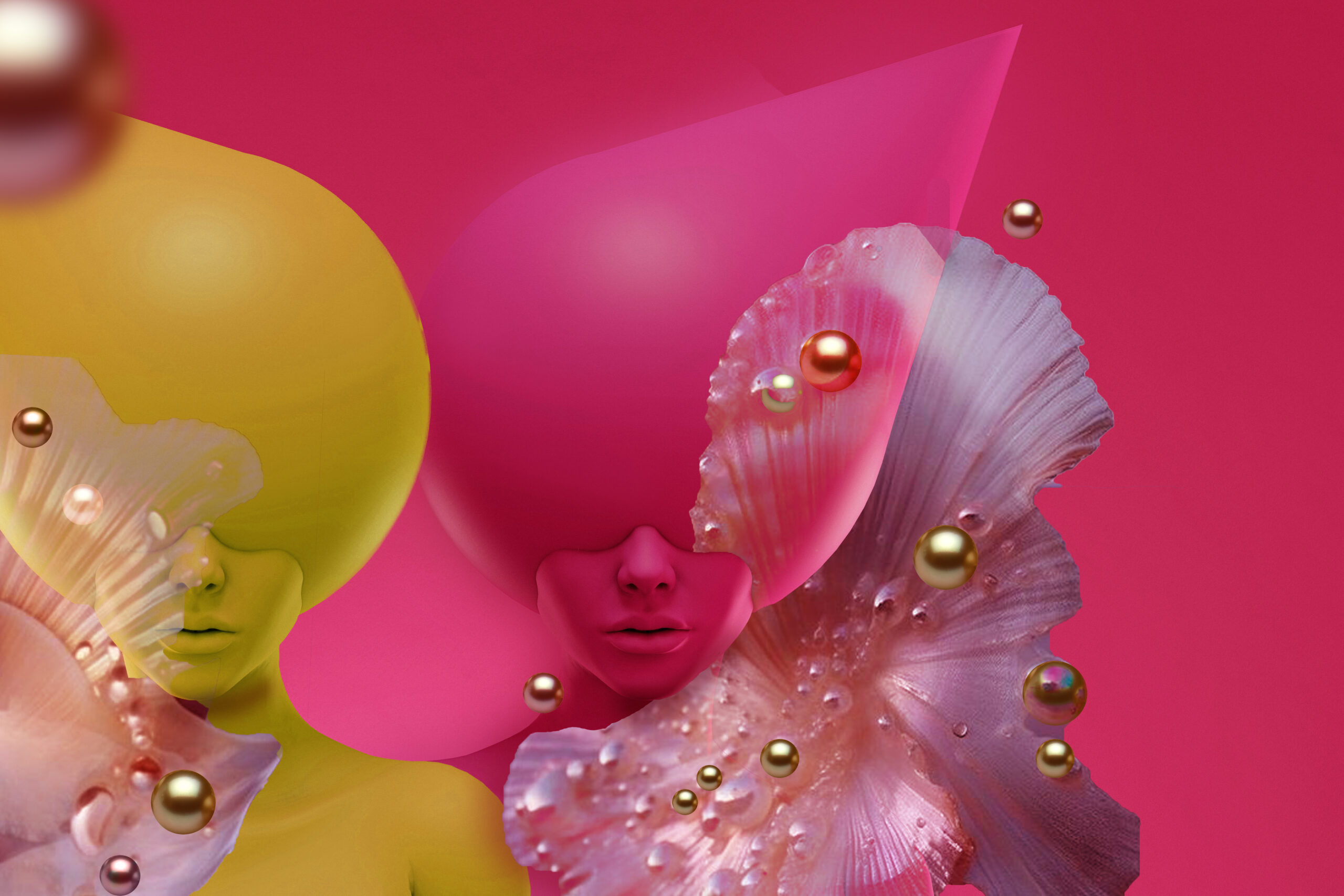It may have taken a Deepika Padukone -Ranveer Singh wedding to get the House of Angadi some extra media blitz, but it wasn’t really a game changer for the brand in the true sense of the word. For years they have been catering to discerning clientele from different walks of life and building up a reputation for curated heritage collections with contemporary finesse.
K Radharaman, Founder, CEO & Design Head at House of Angadi.
Back in Time
The founder of this brand is K Radharaman, quietly passionate about his 600 year old family legacy. With the soul of a weaver and the aesthete of a couturier, Radharaman has been redefining Indian luxury wear, spearheading radical interventions in traditional weaves, contemporising bridal-wear and imbuing occasion-wear with a global appeal.
The self-taught textile designer who is also an engineering graduate from Cornell says his experimental textile journey has no end in sight, anytime soon.
“India’s heritage in textiles is so vast that we haven’t even scratched the surface yet. The Angadi story actually began around 600 years ago with a group of traditional silk weavers from South India – known by the name Padmasaliya. They migrated from Andhra Pradesh to Tamil Nadu and gained a reputation for fine craftsmanship and silk weaving, earning the moniker of Angadi Vals or shopkeepers. By the 1950s, their clientele had grown to include an impressive list of discerning elite, royal families, heads of state and people who truly understood and appreciated quality and craftsmanship. I was fortunate to inherit a great legacy and turn it into an entrepreneurial success,” he begins.
And over some freewheeling conversation and coffee he tells us more.
Various sarees displayed in-store.
Advaya vs. Alamelu
“Advaya was launched in 2010 – it means unique in Sanskrit and denotes the proud amalgam of the past and present by showcasing textiles and saris that are very unique, not just in terms of motifs, colours and patterns but also the warp and weft techniques. We were the first design house to create Kanjivaram silks blended with organza, khadi or linen, embellished with pure gold zari.” He begins explaining about Advaya, the luxury label under the House of Angadi group. “
I felt sceptical about changing it at first, but then the change was only in the weft – the warp remained pure silk. Also, we never tamper with the design vocabulary of the sari. The motifs used in the border, body and pallav remain true to a classic Kanjeevaram. The result is a luxurious, supple drape that is light and wearable. Our summer brides especially loved it. We also created rich Ikat- Upada- Kanjivarams, with softly blurred motifs etched in gold zari. The possibilities of these experiments are limitless- going beyond Kanjivaram to classic Kota tissue, muslin Jamdanis and Benarasis.”
It takes a lot of work and passion to do this but the results speak for themselves – Radharaman tells us about how the weavers were initially reluctant to change the old processes due to the different yarns having different characteristics and how re-engineering meant changing the loom set up, not just the fabric or yarn – a seemingly impossible task that took several attempts to get right.
The label Alamelu on the other hand, takes textile in the form of ready to wear formal men and women’s clothes to an international audience.
“Alamelu was born out of The House of Angadi’s legacy in textile weaving going back over six centuries. It is the outcome of my design philosophy and a culmination of many ideas that have built up over the past year. I also felt the need to explore and contemporise India’s vast wealth of textile techniques and perhaps reinvent their design language to suit a wider audience. Alamelu is created for men and women who make clear sartorial choices. We offer a range of jackets, trenches, skirts, shirts, blouses and dresses with minimal embellishments that can hold their own in fashion capitals around the world. As a trained engineer, I visualise and create the garment, skip the sketching part and go straight to construction. I often jot down notes in the middle of the night and make sense of them later.”
Does your engineering training hamper your design processes?
To that Radharaman simply responds, “It actually helps me to think constructively and innovatively. When I conceive of an idea, I come up with ways to create the product- whether it’s a sari, a prêt-à-porter line or a luxe retail space. I’m unfettered by formal design training, hence able to think differently.”
Intricate interiors of the Angadi Heritage store in Jayanagar, Bengaluru.
Curation Philosophy
At The House of Angadi Radharaman says they believe in promoting home-grown craftsmanship.
“In India we take luxury, aka customised, handcrafted pieces for granted. I consider the Kanjivaram to be the epitome of true luxury. The West knew how to promote, fete and nurture their craftsmen. Through their highly specialized craft guilds, royal patronage and through conquest, they built and promoted luxury brands that were recognized the world over. Their luxury industry has evolved over centuries and their craft guilds were carefully structured and highly specialised. French Ateliers are great examples of uncompromising quality, so the high price one pays is worth it. When an article is made in France and carries the label, it means something. Italians however are allowed to attach a ‘Made in Italy’ label even if just a tiny thread came from Italy. In India the craft clusters became mere caste distinctions over centuries.”
A sales assistant skilfully folds a beautiful saree.
On his thoughts on the modern Indian bride, Radharaman discloses they “Are still evolving their idea of bridal attire. Earlier generational brides wore what was dictated by customs and traditions. In India it was de rigueur – to wear an uncut cloth- for all important occasions from birth to death. The whole culture of cutting and sewing was imported. We traditionally celebrated the drape and flow of textiles through sarees and dhotis that assumed the shape of the wearer. For the last 20 years, which is frankly not long, brides have been experimenting with cut and stitched garments, still trying to find what suits them best. I feel nothing can really compete with the versatility of a saree-whether you are 20 or 80.”
To him timeless fashion is an oxymoron since everything changes and fashion is cyclical. He believes one should personalise what they wear, own and feel comfortable in it and never be tied to a fad. Along the vein of fads and the rise in sustainable fashion labels and designs, the he believes in slow fashion garments that can be worn differently for numerous occasions.
“Merely changing the fabric does not mean that something is truly sustainable. I hope young designers who want to make a real difference will deeply question the whole manufacturing process involved and the long term impact. Sustainability is much more than a ‘woke’ term to attach to your label.” Radharaman concludes.
Words by Jackie Pinto.
Photographs by Anush S. Kumar.
